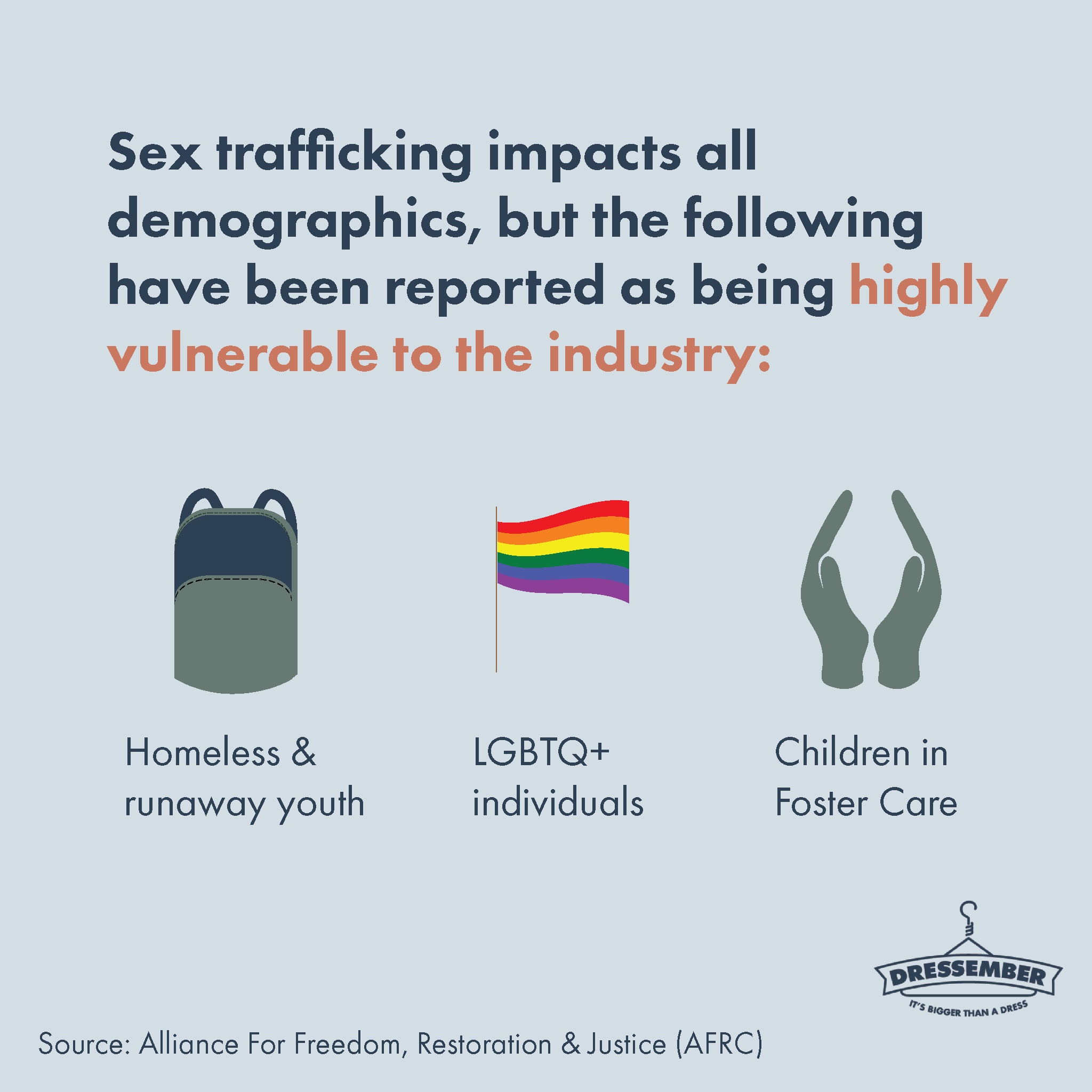What demographics are at risk for sex trafficking?
Dressember Reading Day #11
Every day during the month of December, we’re answering common questions and breaking down different aspects of human trafficking on our blog and Instagram. Join us in raising awareness about the injustice of human trafficking by sharing, donating, or joining the Dressember campaign (it’s not too late!).
Sex trafficking is a global trade that generates billions of dollars of revenue through exploitation. As with any worldwide industry, sex trafficking has a target demographic when it comes to recruiting.
According to the Alliance for Freedom, Restoration, and Justice (AFRJ), the most at-risk groups for sex trafficking include homeless or runaway youth, youth in foster care or in the welfare system, LGBTQ+ individuals, migrants, and refugees.
Why do traffickers single out these groups?
These demographics are targeted because they are the most vulnerable—the more vulnerable, the easier they are to take advantage of.
A 2016 U.S. Trafficking in Persons report states, “Although human trafficking affects every demographic, a common factor across all forms of modern slavery is the victims’ vulnerability to exploitation. Generally, when inequality exists and where certain people lack access to social protection and justice, human traffickers are able to thrive.”
Trafficking often happens on the margins of our society—the places we try not to go, the places we overlook and try to forget about. For example, recruiters will often hang around in places where homeless youth are known to gather, offering them money or basic survival necessities like food, shelter, or protection in exchange for sexual acts. Others target migrants and refugees who have a language and cultural barrier. Undocumented immigrants make especially easy targets, and often disappear without a trace because of their immigration status or lack thereof.
The AFRJ states in the aforementioned article, “Human trafficking is the end result of years – sometimes generations – of vulnerabilities that have been unaddressed, under-resourced, or unnoticed.”
What can I do to help?
While much of our work focuses on rescue efforts around the globe, we also partner with organizations to help prevent human trafficking from ever occurring by reaching out to vulnerable populations around the world. By partnering with Dressember, you are helping fight for freedom around the globe.
Further Reading:
Human Trafficking 101: Who are the victims?
United States Trafficking in Persons Report 2019
Breaking Trafficking Myths: Human Trafficking Does Not Affect Me
Micaela Ricaforte is a senior journalism major at Azusa Pacific University. In addition to writing, she is passionate about storytelling through photography and design.


